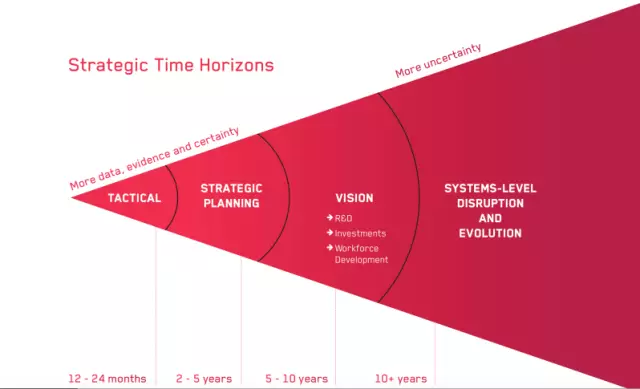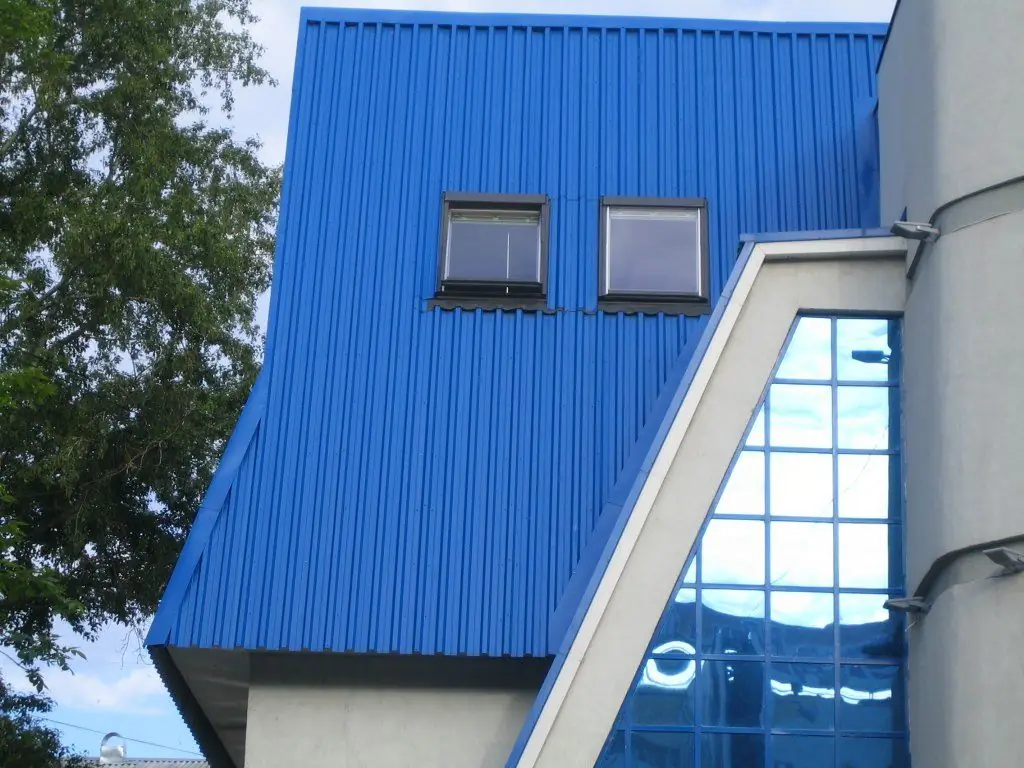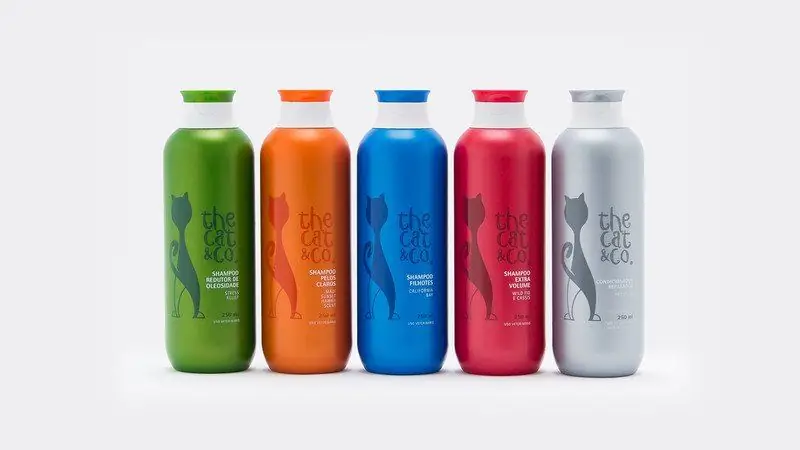
Table of contents:
- Features of the selection and installation of a corrugated pipe for a kitchen hood
- Purpose and technical features of the corrugation
- Varieties of corrugated pipes
- Calculation of the length and diameter of the corrugation
- Corrugated pipes cost
- Corrugated pipe installation technology in the kitchen
- Ways to mask corrugated pipes
- Equipment operation rules
- Author Bailey Albertson [email protected].
- Public 2023-12-17 12:53.
- Last modified 2025-01-23 12:41.
Features of the selection and installation of a corrugated pipe for a kitchen hood

The most important condition for a comfortable stay in the kitchen is ventilation. In city apartments, ventilation shafts with an exhaust opening are provided. But this is not always enough. Vapors generated during cooking can remain in the kitchen for a long time and spread to other rooms. To avoid this, an additional device is installed above the stove, which accelerates the removal of unwanted moisture and cleans the room from the accumulation of odors.
Content
- 1 Purpose and technical features of corrugation
-
2 Varieties of corrugated pipes
- 2.1 By material of manufacture
- 2.2 By cross-sectional configuration
- 2.3 By manufacturing method
- 2.4 By the presence of thermal insulation
- 3 Calculation of the length and diameter of the corrugation
- 4 Cost of corrugated pipes
- 5 Technology for installing corrugated pipes in the kitchen
- 6 Methods for masking a corrugated pipe
-
7 Equipment operation rules
7.1 Video: installing the hood and connecting the exhaust pipe
Purpose and technical features of the corrugation
There are several ways to connect the air exhaust from the cooker hood. The easiest is to connect to the ventilation shaft using a corrugated aluminum foil pipe.

The ventilation ducts are covered with aluminum foil
This method is the cheapest, most convenient and popular among home craftsmen. Installation of corrugation does not require special tools and skills. He is within the power of any person capable of holding a screwdriver and pliers in his hands.
The corrugated pipe has a number of advantages over an all-metal or plastic channel:
-
ease of installation. The pipe bends freely at any angle and retains the given shape. No need to use corner pieces. Since the weight of the corrugation is very small, rigid fixation to the walls is not needed;

Worker connects corrugation elements Extension of the corrugation length is carried out with special couplings
- combustion resistance. The metal-coated corrugation is designed for temperature loads up to 300 ° Celsius;
- a wide range of. There are various types of corrugated pipes on sale, so you can choose the desired diameter and length of the product;
- ease of processing. Corrugated metal pipe can be easily cut with an ordinary knife or scissors. If necessary, you can snack on the frame rings with household cutting pliers. No tool is needed to compress and unclench the pipe; it can be done by hand;
- acceptable price. The cost of corrugation is affordable even for the most modest budget (from 75 to 140 rubles per linear meter);
- the possibility of building up. If the length of the segment is not enough, building is done using connecting elements and clamps. At the same time, the total weight of the structure changes slightly;
- no need to use corner elements. When laying the duct with corrugation, angles of 90 ° or less can be avoided. Smooth bends help to improve the throughput of the pipe and to quickly evacuate gases;
- the ability to use in a limited space (or non-standard layout). With the help of corrugated pipes, many installation problems in small rooms are solved.
When planning a kitchen ventilation system, one should also take into account the disadvantages of corrugation:
- the ribbed inner surface creates resistance to air movement, which increases the background noise in the room;
- during operation, condensate, dust and grease accumulate on the inner folds of the pipe. Returning the surface to its original cleanliness is problematic. Therefore, the corrugation is often simply changed;
- if the pipe is not hidden by a box or cabinet, its appearance is not as aesthetic as, for example, pipes made of plastic or tin.

Often the corrugated pipe is hidden in various ways, since it has an unaesthetic appearance.
A quick comparison can be made between corrugated pipe and plastic pipe. These two types are the most popular today. The differences are:
- cost. The cost of a plastic air duct is several times higher than the cost of corrugated pipes (the price of a running meter of a plastic pipe ranges from 300 to 800 rubles);
- installation. In a confined space, plastic pipes are much more difficult to install. To connect the hood to the ventilation shaft, at least two transition elements are required;
- measurement accuracy. When installing ventilation from plastic pipes, it is important to carefully select the dimensions of workpieces, adapters and corners. In contrast to this, the corrugated pipe is easily stretched and compressed, bent at any angle;
- practicality. Plastic pipes are better at resisting dirt and dust deposits. The smooth surface is easy to clean and wash;
- noise level during operation. There are no ribs inside the plastic pipes that create additional air resistance, and therefore they are quieter;
- aesthetics. Corrugated pipes are not subject to coloring and color change. Plastic can be matched to the tone of the kitchen set. Tubes of various colors and shades are available for sale. In addition, the surface can be pasted over with colored foil, which will give the ventilation the desired appearance.
The choice of this or that type of duct depends on many reasons and is dictated by a specific situation. If cleanliness and aesthetics are more important, plastic pipes should be chosen. If you are interested in low cost and quick installation, preference is given to a corrugated pipe.
Air removal can be done in two ways:
- connecting the corrugation to the ventilation shaft;
- by bringing it out directly through the wall, but for this it is necessary to make a hole in the wall with the same diameter as the pipe.
In panel houses, the second option is not acceptable. Connection to a mine is the most appropriate ventilation method, especially in northern regions. A damp spot often forms on the inside of the wall where the pipe goes outside. Over time, the plaster peels off, and mold settles around the pipe - the wall turns black, the finish coat deforms and collapses. As soon as the hood turns off and the movement of warm air stops, the metal pipe becomes covered with condensation. Gradually, this leads to destructive phenomena.
Varieties of corrugated pipes
The principle of manufacturing a corrugated pipe is as follows. A sealing coating is pulled over the frame, consisting of identical metal rings. The result is a semblance of an all-metal pipe, but with properties of lightness and flexibility. Such a product has the ability to return to its original state after stretching, while no deformation occurs. Corrugations are classified according to several criteria.
By material of manufacture
On sale there are corrugated pipes made of:
- aluminum;
-
low or high pressure polyethylene;

Polyethylene corrugation Polyethylene pipes are not designed for high temperatures
-
textiles;

Corrugated textile The material for the manufacture of textile corrugation is mineralized fabric
- polyvinyl chloride;
-
thin stainless steel;

Metal corrugation The metal pipe is able to withstand high temperatures
- galvanized steel.
By cross-sectional configuration
According to the shape, the products are divided into round and rectangular. The first option is used to connect the kitchen hood. Rectangular pipes are used in large ventilation systems - in factories, warehouses, shopping and administrative centers.
By manufacturing method
In addition to frame ventilation pipes, there are spiral-wound corrugations. They are made from thin metal strips by twisting. It is believed that the spiral corrugation is conditionally flexible, since stretching by 2.5 - 3 times leads to the fact that there is no return to the original shape. Bending requires more force than a similar scaffold tube.

Spiral wound corrugated pipes have limitations in flexibility and elongation
By the presence of thermal insulation
There are two types of corrugated pipes for this feature: corrugation with and without thermal insulation. The insulation consists of a layer of mineral insulation. This allows ventilation ducts to be laid inside and outside the room. As a rule, insulated corrugations consist of two or four layers, which, as a result, makes them stronger and more durable.
Calculation of the length and diameter of the corrugation
When installing the chimney yourself, you need to make two measurements. You need to define:
-
diameter of the outlet from the fume hood (located in the upper part of the hood);

The worker determines the diameter of the corrugation The cross section of the pipe is measured with a vernier caliper
- distance between the hood and the ventilation shaft opening.
If a free position of the corrugated channel is planned, the distance between the exhaust outlet and the ventilation shaft window is measured in a straight line.
Typically, household hoods have an outlet with a diameter of 100, 110, 125 and 150 mm. The corrugated pipe must exactly match this section. It is unacceptable to connect a corrugation of a larger or smaller diameter to the hood. This will lead to a violation of the air duct tightness and leakage of gases into the interior of the kitchen.
When purchasing a corrugated pipe in a store, you should pay attention to the technical data sheet of the product. It indicates the performance, length and diameter of the ventilation arm.
To determine the length of the sleeve, you need to measure the distance from the hood to the ventilation shaft. This takes into account the trajectory with all bends and deviations. Experienced installers add 10 - 15% to the distance obtained. Since the corrugation is freely compressed and stretched, there is no need to cut off the excess.
Measurements are made with a construction tape along the outer corner of the "route" (that is, the maximum distance is determined).

To measure the trajectory of the corrugation, use a five-meter tape
Corrugated pipes cost
Many hardware and hardware stores sell aluminum foil corrugations. In any sales department that specializes in gas and water equipment, there are also such pipes with different diameters and lengths.
As for the price, it is directly proportional to the diameter. The approximate prices are as follows:
- corrugation made of aluminum foil 3 meters long and 100 mm in diameter - 180 - 200 rubles;
- the same corrugation with a diameter of 110 mm - 190 - 210 rubles;
- diameter 125 mm - 220 - 240 rubles;
- diameter 130 mm - 250 - 260 rubles;
- diameter 150 mm - 280 - 300 rubles;
- diameter 200 mm - 370 - 390 rubles.
Corrugated pipe installation technology in the kitchen
To install you will need:
- corrugated pipe with a diameter identical to the exhaust outlet;
-
two clamps of the appropriate size;

Clamps The size of the clamp should correspond to the circumference of the corrugation
-
ventilation grill with corrugated branch pipe;

Ventilation grill for the hood The diameter of the ventilation grill opening is selected in accordance with the section of the corrugated pipe
- aluminum tape;
- dowels and screws.
Tools:
- Phillips screwdriver (2PZ configuration);
- pliers;
- knife.
The pipe is stretched to its maximum length before installation. This contributes to better air flow during hood operation. The ribs are partially smoothed, dust and grease vapors do not accumulate in the recesses. In addition, stretched corrugation produces less noise.
This is followed by direct installation:
-
Connection to the exhaust outlet. The pipe is pulled over the branch pipe and securely fixed with a clamp, tightening the adjusting screw. To do this, it is necessary to free the branch pipe from the protective casing and gain access to the outlet pipe. The corrugation is pushed onto the branch pipe at a distance of at least 100 mm. The clamp is placed in the middle, that is, 50 mm from the edge of the part. Sometimes several clamps are installed, the distance between them is left the same. For example, if 2 clamps are placed on a 10 cm nozzle, then a distance of 3 - 5 cm is left between them.

The worker attaches the corrugation to the hood The connection point of the hood with the corrugation is closed with a protective cover
-
Connection to the outlet of the ventilation shaft. To do this, use a special lattice with an outlet for the corrugation. All actions are repeated in the same order. The pipe is put on the branch pipe and secured with a clamp. It is most convenient to perform this operation on the removed grille. The connection is carefully sealed and additionally wrapped with tape, the higher the tightness, the more efficient the hood will work.

Fastening the corrugation to the ventilation shaft When installing corrugations, all joints are treated with sealant
-
The ventilation grill is fixed to the shaft opening with dowels and sealed. After installing the corrugated sleeve, the grating is attached to the outlet. Any fastener can be used depending on the shape and material of the wall. In urban apartments with concrete and brick walls, dowels are used. In summer cottages with wooden partitions, it is better to use wood screws. The grating can be fixed to smooth walls with waterproof glue or liquid nails.

Liquid Nails The ventilation grill is quickly and reliably fixed to the wall with the help of mounting adhesive
Sometimes it happens that the diameters of the pipe and nozzles do not match. If the restriction does not exceed 20% of the manufacturer's recommended diameter, an adapter can solve the problem. They are made from both plastic and metal.

The connection of pipes with different diameters is carried out using a transition sleeve
The universal reducer is designed for connecting pipes of various cross-sections. Corrugation is fixed using metal or plastic clamps.

Snap-on plastic clamps securely fix the corrugation in the seat
The connection order is as follows:
- A larger diameter corrugation is connected to one side of the coupling. Pressing the foil tightly to the adapter, fix it with a clamp.
- On the other hand, a corrugated pipe of a smaller diameter is put on the coupling. Fastening is done in a similar way.
-
To improve the tightness of the joint, both joints are additionally wrapped with aluminum tape.

Extractor hood Sealing the joints and repairing minor damage to the corrugated sleeve at the hood can be done with aluminum tape
Ways to mask corrugated pipes
Giving an aesthetic look to the kitchen is inextricably linked with the masking of all technical pipes - water supply, sewerage and ventilation. The corrugation is quick and easy to install, but it doesn't look very nice. There are several effective ways to hide a pipe:
-
creating a visor over kitchen cabinets. This is done simply - from laminated chipboard slabs, awnings are constructed over the kitchen furniture. A protrusion 20 - 30 cm from the edge of the cabinet will reliably hide all communications from the eyes, including the air duct and electrical cables. Often, additional illumination from spotlights is installed in the visor. If the repair is planned in advance, you can pick up such furniture, which is initially equipped with a visor;

Visor on kitchen furniture with hood A hanging visor on the cabinets hides the corrugation from the eyes
-
hiding the corrugated channel with a suspended ceiling. A stretch or plasterboard ceiling hides all communications. But if a breakdown suddenly occurs, you will have to disassemble the structure (or part of it). Therefore, it is not always advisable;

Slatted kitchen You can hide the corrugated sleeve above the suspended slatted ceiling
-
creation of a plasterboard box. This is the simplest and most practical option. With the help of metal profiles and sheets of drywall, a kind of cornice is mounted on the wall, inside which a ventilation pipe is laid. The upper plane is removable, and in the event of a malfunction, the box opens, freeing access to the corrugation. Additional point lighting is often installed in the walls of the box;

Kitchen with plasterboard box To hide the chimney, a plasterboard box is used, which can be equipped with additional lighting
-
installation of an additional cabinet for the hood. In this way, you can hide impartial pipes in the event that the hood is located near the ventilation shaft. To match the rest of the hanging cabinets, an additional case is selected, the dimensions of which correspond to the dimensions of the hood. A round hole is cut in the partition along the corrugation diameter. The rest of the cabinet space is used for storing kitchen utensils;

Extraction cabinet Separate wall-mounted extractor hood completely conceals the pipes
Equipment operation rules
With proper installation, the corrugation is guaranteed to last up to 50 years, but it is necessary to follow the operating rules. First of all, you need to remember that the outgoing air can reach a temperature of 100-150 °, which means that the pipe will heat up. To exclude the occurrence of a fire hazard, it is strictly forbidden to:
- contact with foreign fusible objects;
- direct contact with electrical cables;
- long-term accumulation of debris, dust, cobwebs, etc.;
- ingress of water and other, especially flammable, liquids on the outer surface of the corrugated channel.
Regular maintenance of the ventilation pipe will significantly extend its service life and protect residents from emergencies.
Video: installing the hood and connecting the exhaust pipe
The kitchen will always be cozy and comfortable if the air is clean and fresh. Properly organized ventilation is the key to a pleasant atmosphere inside the premises, eliminating the occurrence of persistent unpleasant odors, mold and fungal deposits on the walls.
Recommended:
How To Choose A Hood For The Kitchen - In Terms Of Power And Other Parameters, What To Look For When Buying A Built-in And Built-in, For A Gas And Electric Stove, Professional Advi

What parameters should you pay attention to when choosing a cooker hood for the kitchen: types of devices, how much the prices differ. Model overview and manufacturer information
How To Choose A Kitchen Knife: Which Company Is Better And From Which Material

Rules for choosing knives for work in the kitchen. Types of knives, their distinctive qualities. Selection criteria, best manufacturers
Stone "Cat's Eye": Magical And Medicinal Properties Of The Mineral, Value In Astrology (which Signs Of The Zodiac Are Suitable, Etc.), Types, Photos

Description and history of the stone "Cat's Eye". Where is chrysoberyl obtained? The properties of the stone are physical, magical. The main colors of the "cat's eye". Compatibility
Which Corrugated Board Is Better To Choose For The Roof Of The House, What Needs To Be Considered, As Well As A Description Of Popular Brands With Characteristics And Reviews

Selection rules and types of metal corrugated board for the roof of the house. What are the features of the material of different brands and manufacturers. Reviews about corrugated roofing
Shampoo For Cats: Types (dry, Medicinal And Others), How To Choose The Most Suitable One For Your Pet, How To Apply, Reviews

What are the shampoos for cats. How not to be mistaken when choosing a product. How to use shampoo
